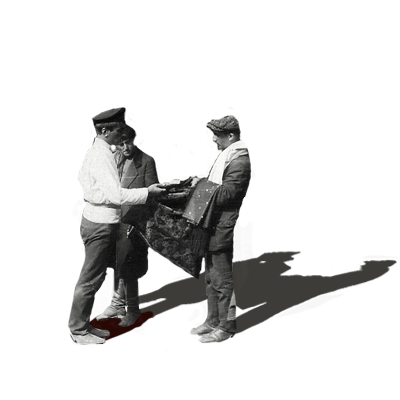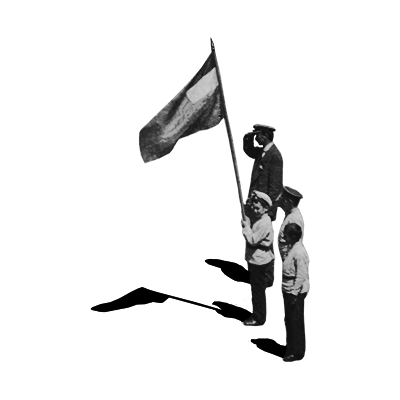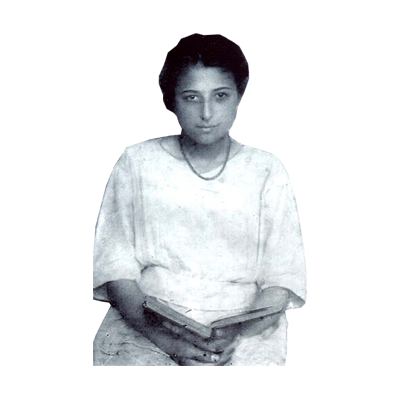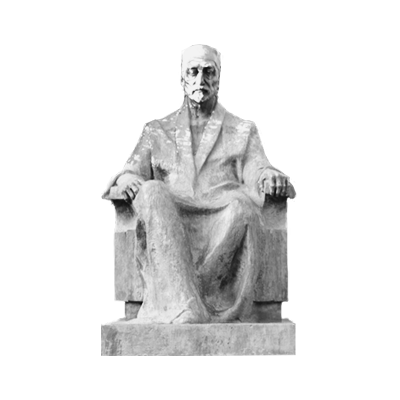


Georgia's Economy Georgia's Economy
The economy of the first Democratic Republic of Georgia The economy of the first Democratic Republic of Georgia
1918-1921 1918-1921


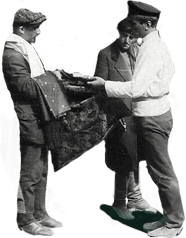
Economic state of affairs
Since the declaration of independence on May 26, 1918, the government had to carry out prudent economic and financial policies in order to maintain statehood, though it was not easy at all to achieve for the newly established state.
The Social Democratic Party played the leading role in the government of the first Democratic Republic of Georgia. The party’s policy was grounded in European socialism. World War I and the national revolution further deepened the economic crisis in Georgia.
The Social Democratic Party played the leading role in the government of the first Democratic Republic of Georgia. The party’s policy was grounded in European socialism. World War I and the national revolution further deepened the economic crisis in Georgia.
Georgian currency
Immediately after the declaration of Georgia’s independence, it became urgent to solve the issue of introducing a monetary system and currency. The challenging political situation demanded from the government to avoid any complications domestically, because it would pose a threat not only to Georgia’s independence but to the physical existence of the nation as well.The 1918-1921 table of bon currency emission of the Democratic Republic of Georgia



Bon currency emission of the Democratic Republic of Georgia
1919 - 1921 years
| Months | 1919 yy. | 1920 yy. | 1921 yy. |
|---|---|---|---|
| January | - | 85 107 400 | 1 293 552 000 |
| February | - | 198 690 100 | 7 282 530 000 |
| March | - | 339 919 400 | - |
| April | - | 388 543 000 | - |
| May | - | 1 312 898 900 | - |
| June | - | 1 162 558 200 | - |
| July | 3 750 000 | 135 893 920 | - |
| August | 60 632 700 | 334 187 580 | - |
| September | 149 767 600 | 1 291 129 900 | - |
| October | 120 731 490 | 1 315 409 500 | - |
| November | 228 433 250 | 515 128 800 | - |
| December | 73 372 060 | 683 846 200 | - |

The issues of establishing Georgia’s national state bank became urgent in 1919. On December 31, 1919, the government adopted the law on the establishment of the state bank, and 50 million was allocated from the budget to this end. In 1920, the process of the bank’s establishment was finalized, and Iason Lortkipanidze became President of the State Bank.
The functions of the State Bank of Georgia were defined as follows:
The functions of the State Bank of Georgia were defined as follows:
- Simplify currency circulation;
- Issue short-term trade, manufacturing, and agricultural loans;
- Strengthen currency;
- Cash and trade in promissory notes;
- Accept savings;
- Trade in immovable property, etc.
- The State Bank was managed by the Administration and the Board.

First Georgian postage stamp
Issued on May 26, 1919.

“Marchili” — the draft of the first Georgian currency
“Marchili”, the name of the monetary unit used in Georgia since the 16th century, was selected to denote Georgian currency.
Foreign trade
In Georgia in 1918-1921 (in poods)
1918-1921

Export
Five most frequently exported products






Import
Five most frequently imported products





Export-import overview Export-import overview
Statistics Statistics
1918-1921 1918-1921

Graphical analysis of the export-import of Georgia’s economy in 1918, 1919, and 1920
Counted in Maneti
MLN
2500
2000
1,500
1,000
500
2050
0
153,000,000
140,900,000
383,000,000
962,800,000
1,332,700,000
2,592,200,000
Dates
1918 yy
1919 yy
1920 yy
Export Import

Economy of the first Democratic Republic
In 1918-1919, according to Noe Zhordania, economic policy consisted of two directions, Bolshevik and Liberal. The Bolshevik direction recognized the Socialist Revolution and socialism, while the Liberal direction upheld the inviolability of capital and broad rights to private initiative. According to the government, granting freedom of action to the state, local self-government bodies, cooperatives, and private capital would lead out heavy financial need.
Democratic Georgia’s strategy for economic reforms was as follows: regulation of finance management, creation of an independent monetary unity, minting money and establishing a customs system, put in place state control, declaration of state monopoly on the export of certain goods, full-fledged agrarian reform and revival of agriculture, attract internal and external resources, upgrade the tax system, simplify management, finalization of judicial reform, cut down state budget expenditure and promote the growth of revenues, promote private institutions, and others.
To draw more financial forces to the state budget, the country declared state monopoly on exported manganese (Chiatura), tobacco leaves, wool, and silk cocoon (silk thread, raw silk). In addition, mines (except for sand, clay, and simple construction stone), medicinal ore baths, waters, and muds were declared property of the state. Lottery was also monopolized by the state.
Because Georgia was believed to be an agricultural country, one of the pillars of the state’s economic revival lay in the proper management of agrarian reform, which was carried out in two stages. One involved confiscating lands above limits from their owners, and the other sought to distribute lands and to hand them in different forms among peasants to own.
Democratic Georgia’s strategy for economic reforms was as follows: regulation of finance management, creation of an independent monetary unity, minting money and establishing a customs system, put in place state control, declaration of state monopoly on the export of certain goods, full-fledged agrarian reform and revival of agriculture, attract internal and external resources, upgrade the tax system, simplify management, finalization of judicial reform, cut down state budget expenditure and promote the growth of revenues, promote private institutions, and others.
To draw more financial forces to the state budget, the country declared state monopoly on exported manganese (Chiatura), tobacco leaves, wool, and silk cocoon (silk thread, raw silk). In addition, mines (except for sand, clay, and simple construction stone), medicinal ore baths, waters, and muds were declared property of the state. Lottery was also monopolized by the state.
Because Georgia was believed to be an agricultural country, one of the pillars of the state’s economic revival lay in the proper management of agrarian reform, which was carried out in two stages. One involved confiscating lands above limits from their owners, and the other sought to distribute lands and to hand them in different forms among peasants to own.

Through the law adopted by the National Council, 19 customs stations were created under the management of the Ministry of Finance, Trade and Industry through the Main Customs Office. The largest amounts of goods were imported from Russia, Azerbaijan, England, America, Italy, and Armenia. The largest amounts of goods were exported to Azerbaijan, Armenia, Russia, Italy, the Ottoman Empire, and England. The largest amounts of goods were exported through the Poti and Sokhumi customs stations. The largest amounts of goods were imported through the Batumi and Poti customs stations.
Part of the information above has been extracted from Tamar Atanelishvili’s thesis titled Economic Reforms in the Democratic Republic of Georgia. Please see attachment for the thesis.
Part of the information above has been extracted from Tamar Atanelishvili’s thesis titled Economic Reforms in the Democratic Republic of Georgia. Please see attachment for the thesis.













